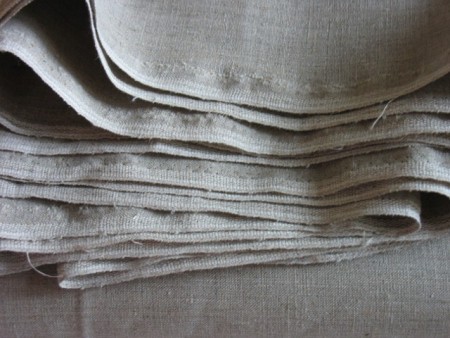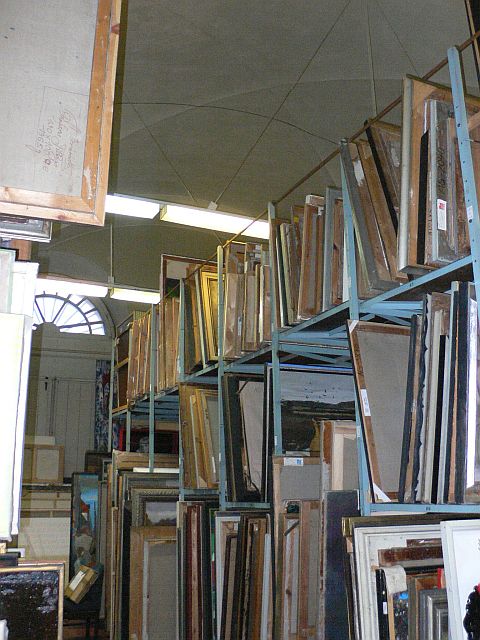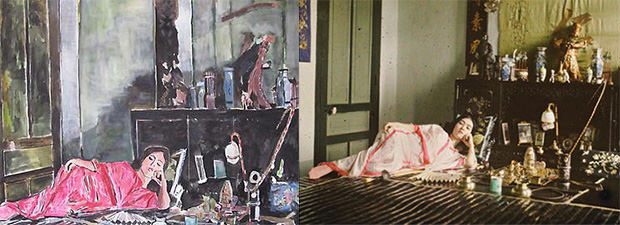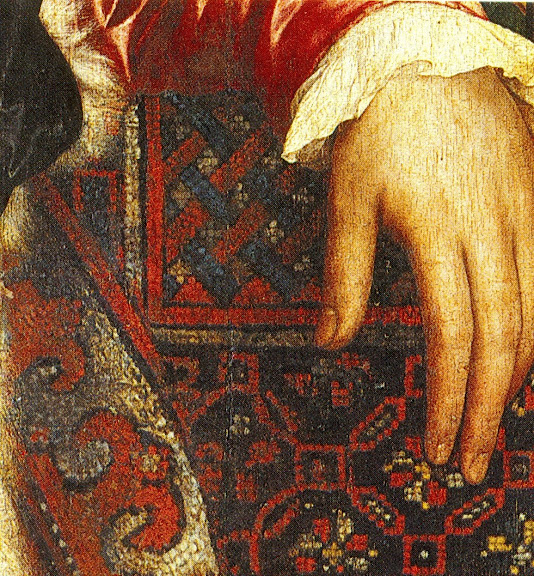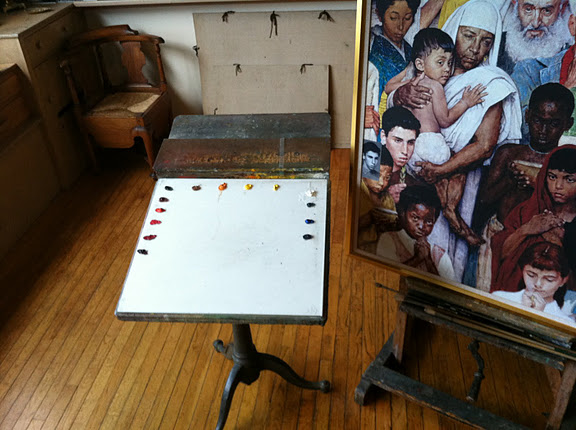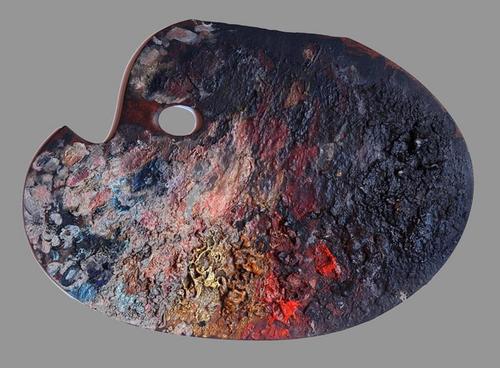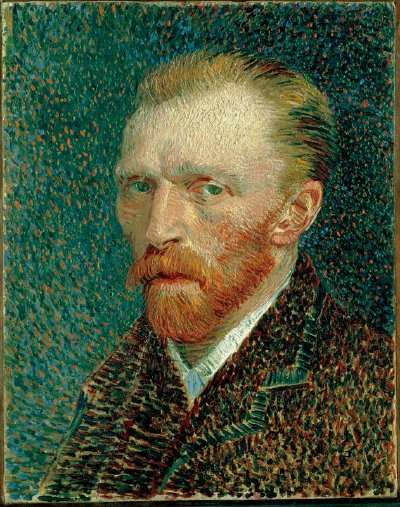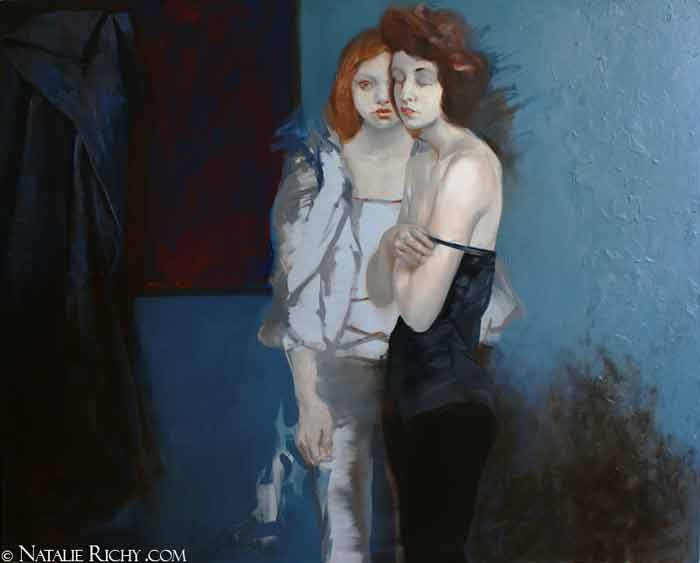On 9 Aug, 2012 With
Oil painting materials: Grounds Grounds.—The color of the grounds should be of interest to you. Canvases are prepared for the market usually in three colors,—a sort of cool gray, a warm light ochrish yellow, and a cool pinkish gray. Which is best is a matter of personal liking. It would be well to consider what the effect of the ground will be on the future condition of the picture when the colors begin to effect each other, as they inevitably will sooner or later. Vibert in his “La Science de la Peinture” advocates a white ground. He says that as the color will be sure to darken somewhat with time, it is well that the ground should have as little to do…
Read More
On 5 Aug, 2012 With
Oil painting materials: CANVASES, STRETCHERS AND PANELS You should have plenty of canvas on hand, and it would be well if you had it all stretched ready for use. Many a good day’s work is lost because of the time wasted in getting a canvas ready. It is not necessary to have many kinds or sizes. It is better in fact to settle on one kind of surface which suits you, and to have a few practical sizes of stretchers which will pack together well, and work always on these. You will find that by getting accustomed to these sizes you work more freely on them. You can pack them better, and you can frame them more conveniently, because one frame…
Read More
On 4 Aug, 2012 With
Singer Bob Dylan accused of plagiarizing photographs Singer Bob Dylan is being accused of plagiarism after several paintings in his recent art show were found to have “striking resemblances” to works by photographers such as Henri Cartier-Bresson, Dmitri Kessel and Léon Busy. An example is Dylan’s painting titled Opium(above left), which appears to be directly copied from Busy’s Vietnam (above right). Dylan had copied six photographs — one of which an artificial Photoshop edit — from his Flickr stream. In response, the gallery hosting the show changed the exhibition’s description from a “visual diary” of Dylan’s travels to a “visual reflection”. A spokesperson tells The Guardian: “While the composition of some of Bob Dylan’s paintings are based on a variety of sources, including archival, historic images,…
Read More
On 8 May, 2012 With
The two men pulled up in the driveway of the two-star country hotel, looking for all the world like travelling salesmen stopping off for a night’s rest between appointments. But the rectangular package on the back seat of their car contained something rather more valuable than catalogues or brochures. Only once they were in the privacy of a locked room, the curtains firmly closed, did private detectives Robbie Graham and Jack Doyle dare to unwrap the treasure they had just rescued from the criminal underworld. And then they just sat and stared at it in wonder, scarcely able to believe what they were seeing. On that October night in 2007, they took snapshots of themselves posing next to it, using…
Read More
On 21 Apr, 2012 With
The controversial Restoration of Holbein’s “Ambassadors” The Early Music pioneer (Sir) John Eliot Gardiner recently left the Daily Telegraph’s music critic, Ivan Hewett, reeling with incredulity by saying that he had not seen himself as a crusading musicological force but simply as a jobbing musician who recognised that “other views are valid, as long as they’re convincing in performance”. For Hewett, Gardiner had long epitomised the radical movement to “scrape the varnish” off music by playing on obsolete period instruments and eschewing later styles and types of musical understanding in attempt to produce historically authentic performances. For over half a century after the Second World War picture restorers at the National Gallery, London, sought to recover the historically authentic appearances of paintings by first removing…
Read More
On 9 Dec, 2011 With
Norman Rockwell’s Palette Norman Percevel Rockwell was a 20th-century American painter and illustrator. Alizarin crimson Cadmium red (deep) Cadmium scarlet Cadmium red (extra pale) Burnt sienna Raw Umber Raw Sienna Ferrous yellow Lemon yellow (WN) Zinc white Viridian Cobalt blue Ultramarine blue He has these colors listed as sometimes Magnesium blue Cadmium yellow (medium) Cadmium orange Light red Mars Violet From Rockwell on Rockwell: How I Make a Picture by Norman Rockwell (Hardcover – Nov. 1979)
Read More
On 28 Nov, 2011 With
Léon Bonnat’s Palette Prussian blue Cremnitz white Naples yellow Yellow ochre Light red Vermilion Alizarin crimson Burnt sienna Ivory black Bitumen (Bonnat only used this color for glazing) Bonnat’s medium: 1 part Courtai siccative and 1 part turpentine. Bonnat used this medium in the shadows only. Support: White oil ground
Read More
On 22 Nov, 2011 With
Vincent van Gogh’s Palette Yellow ocher Chrome yellow Cadmium yellow Chrome orange Vermilion Prussian blue Ultramarine Lead white Zzinc white Emerald green Red lake Red ocher Raw sienna Black
Read More
On 11 Aug, 2011 With
A French Naive or Primitive painter. Henri Rousseau was also known as Le Douanier (the customs officer), a humorous description of his occupation as a tax collector. Ridiculed during his life, he came to be recognized as a self-taught genius whose works are of high artistic quality. Henri Rousseau was born in Laval, France into the family of a tinsmith. He attended Laval High School as a day student and then as a boarder. He was mediocre in some subjects at the high school but won prizes for drawing and music. He worked for a lawyer and studied law, but “attempted a small perjury and sought refuge in the army,” serving for four years, starting in 1863. With his father’s death, Rousseau moved to Paris in…
Read More
On 4 Aug, 2011 With
This Video shows the creation of the figurative painting. The canvas is toned with a thin layer of oil imprimatura, and the two figure drawing is done in sanguine. The oil painting approach is one of simplification of form and colour. In contrast to the clarity with which Natalie describes faces, details of the dress and drapery are done in loose brushstrokes and are stylised impressionistically. The composition of the painting is located in fictive surroundings. The elegant blue colours in the painting suggest nostalgia, which ads imaginative and aesthetic significance. Natalie brought to this figurative picture a modern sensibility, impressionistic effects and painterly fluency.
Read More


